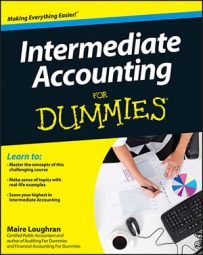Your intermediate accounting textbook probably highlights two special issues that happen quite often in the business world: figuring partial-year depreciation and accounting for changes in the depreciation rate.
Partial-year depreciation: Rare indeed is the day a company buys an asset on the first day of the financial period. So what to do when a company buys an asset on September 1 (or any other day), when the financial year starts on January 1? You prorate the depreciation expense among the accounting periods involved.
If the asset has a useful life of five years, the first year of depreciation is prorated using the fraction 4/12 (four months remain in the year, September through December). Any leftover depreciation is taken in year 6.
Accounting for rate changes: The cost of the depreciable asset is the only part of this equation that isn’t an estimate. Until the whole asset spiel plays out, you don’t know how accurately you estimated the asset’s salvage value or useful life.
For example, say that, at the end of year 3 of the estimated life of a toaster-making machine, you reckon you’ll be able to use the asset for another four years past the original estimate of five years. This gives you a new estimated life of nine years, of which three have already elapsed. What do you do?
From your cost ($27,000), subtract three years’ depreciation ($5,400 x 3), to get a book value of $10,800.
The useful life remaining for your new estimate is 6 years (9 – 3). Straight-line depreciation per year is now $1,800 ($10,800 / 6), for the remaining new useful life of six years.
Under IFRS, if an entity changes the method of depreciation when the previously expected pattern changes, the change is accounted for as a change in estimate, prospectively only.

